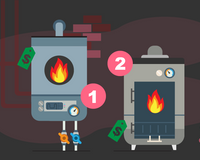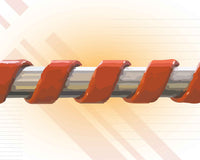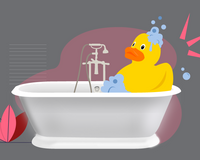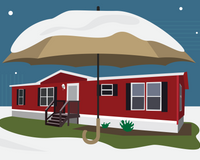With summer days come rising temperatures and potentially uncomfortable and sleepless nights — and an increased demand for mobile home air conditioning accessories here at Star Mobile Home Supplies.
It’s fairly common for newer homes to have their mobile home air conditioning installed during assembly, but there are scenarios in older structures where you’ll need to replace or upgrade an existing system, which will require you to do some shopping around.
In this month’s blog, we’ll help you do your homework, taking you through the different types of mobile home AC units and how they operate, so you can determine the right (and perhaps only) option for you.
How Mobile Home AC Units Work
Although mobile home air conditioning technology has evolved in the roughly 120 years since its invention, today’s mobile home AC units still operate according to the same basic principle. Warm, moist indoor air is blown over chilled, refrigerant-containing coils to remove warmth and humidity, and then recirculated continuously.
Inside those coils, the refrigerant is constantly shifting between gaseous and liquid states to keep the cycle going. Liquid refrigerant evaporates as it absorbs heat from the surrounding warm air — that’s what we want.
However, to revert it to its liquid state, it must be condensed, and the energy required to do that generates heat — which is what we don’t want. That heat is pumped outside so that mobile home AC units can stay on task.
Components of Mobile Home AC Units
Whether they’re made for a site-built home or a mobile home, all mobile home AC units must contain these four essential components.
-
Evaporator coils — Receive the cooled liquid refrigerant, which will be converted to gas as warm indoor air is blown over it (the evaporator coils and this fan together are called the “cold side” of the air conditioner). The evaporator’s main task is to stay cooler than the ambient indoor temperature.
-
Condenser coils — Warmed refrigerant vapor moves into the condenser coils to transfer heat outdoors, where the “hot side” of the air conditioner is situated. Another fan ejects heat from the condenser outward.
-
Compressor — This large electric pump takes the refrigerant vapor and pressurizes it back into the liquid refrigerant that will eventually flow back into the evaporator coils.
- Expansion valve — Regulates how much liquid refrigerant returns to the condenser.
Also included in most modern mobile home AC units are sensors (e.g., temperature and humidity), timers, and valves for automation and energy efficiency purposes.
4 Types of Mobile Home AC Units
As we’ve established, all mobile home air conditioning systems have a cold side and a hot side. But depending on what type of mobile home air conditioning you have, these components may be housed together or separately, partially outdoors or completely outdoors, share ductwork and controls with your heating system, and/or distribute the cooled air differently.
Let’s sort out the four most common types you’ll see:
-
Packaged AC System — By far the most common type of mobile home AC unit, a packaged system takes everything and puts it together in a metal box outside (usually on the ground) to conserve precious space inside.
-
Ductless Mini-Split AC System — Another space-saving option is the ductless mini-split AC system. Here multiple wall-mounted indoor air handlers connected to an outdoor condensing unit efficiently cool air, with virtually no noise generated.
-
Central AC System — Circulates cooled air using the same ductwork as a forced air furnace system, controlled by the same thermostat. The evaporator coil is located indoors with the furnace, and the condenser unit is located outside.
- Window AC Unit — The classic (and noisy) low-budget option, a window mobile home AC unit fits neatly into a window frame, in whichever room is the hottest. The evaporator faces inward, while the condenser is located in the “butt” of the unit protruding outward.
How Much Cooling Capacity Do You Need?
To determine the cooling capacity needed, check the manufacturer’s data plate, which you will find affixed either to the inside of one of your kitchen cabinet doors, the back wall of one of your bedroom closets, inside your water heater closet, or on the inside of a bathroom cabinet door (in other words, somewhere inconspicuous).
Cooling capacity is measured in BTUs (British Thermal Units) or tons, and refers to the units of heat that the mobile home air conditioning system can remove per hour. One ton is the equivalent of 12,000 BTUs.
You may need slightly more or less BTUs depending on which direction your home is facing (south-facing homes get hotter vs. north-facing homes) and the number of occupants living there (more bodies = more heat), but it’s highly advised you otherwise do not exceed the maximum, as it can lead to condensation within the home and shortens the life of the equipment.
If you have questions about how many tons you need for your climate, ENERGY STAR has available this handy chart explaining manufactured home cooling equipment sizing guidelines. Square footage and climate zone are the principal considerations here!
Mobile Home AC Unit Accessories from Star
Don’t sweat over energy bills or equipment quality this summer! Live comfortably with brand new, energy efficient AC accessories from Star.






